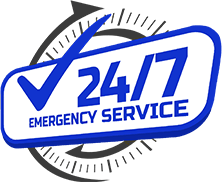EV Charger Installation in Yucca Valley
Having an EV charger at your home is extremely convenient and makes saving money so easy. You always have the option to just use Level 1 charging by plugging your vehicle into a standard 120-volt outlet.
The problem with this is that your vehicle could take over 24 hours to receive a full charge. That is why installing a Level 2 charging station can be incredibly handy.
With a Level 2 EV charging station, you’ll fully charge your electric vehicle overnight with no issues. If their batteries aren’t fully dead, you can usually charge two electric vehicles overnight after work. Being able to recharge your EV at home as needed is also much less expensive than having to use public charging stations.
Another thing to consider is that using Level 3 DC Fast Charge stations too often can significantly damage your battery. Level 3 charging supplies so much power that it causes the battery to heat up, which can lead to it deteriorating over time. Once EV experts figure out a way for it to be safe, Level 3 DC Fast Charging will become another option.
The first step in installing an EV charger is determining the best location. If possible, installing an EV charger inside a garage is always the best option.
One reason is simply for security since it lets you keep your vehicle safely locked inside your garage while charging. Another reason is that recharging your EV battery inside helps to protect your battery.
The issue here is that charging in extreme heat or cold puts lots of strain on an EV battery and will slowly cause it to deteriorate. It’s best to try to charge an EV in temperatures around 70 degrees, which makes the garage an ideal place.
When choosing the location for the charger, you also need to consider the length of the charging cord. Most cords are between 15 and 30 feet, and you need to ensure the cord will reach wherever you park the vehicle.
Once you’ve chosen the location, an electrician must inspect your electrical panel and perform a load calculation. A load calculation lets the electrician determine your home’s total electrical needs. This step determines if your current electrical service supplies sufficient amps to accommodate the EV charger.
They must also determine if the panel has adequate space for an additional 240-volt double-pole circuit breaker. Electrical code requirements stipulate that any Level 2 EV charger must be on a dedicated 240-volt circuit.
Upgrade to a higher-amp panel if your home only has a 100-amp service panel. Depending on how many other 240-volt circuits your home already has, even a 200-amp panel isn’t always sufficient. If your current service doesn’t have enough amperage, you’ll end up experiencing numerous issues any time you’re charging your vehicle.
You will almost always need an electrician to wire a new 240-volt circuit to your garage or wherever you plan to install an EV charger. You’ll then need to consider plugging the charging station into a 240-volt outlet or hardwiring it to the circuit. If you plug it in, the electrician must install whatever outlet the charger uses.
Although most chargers come with a plug, the electrician can remove the plug and instead hardwire the station. Hardwiring the charger is typically the better choice since it will avoid potential power fluctuations and charge more consistently.
When you choose Home Team Electric for your EV charger installation, we can help with all of the following things.
- Dedicated electrical circuit for your EV charger
- 240-volt outlet or hardwiring the charger
- Electrical panel has sufficient amperage to support the charger
- Upgrading your electrical panel if necessary





